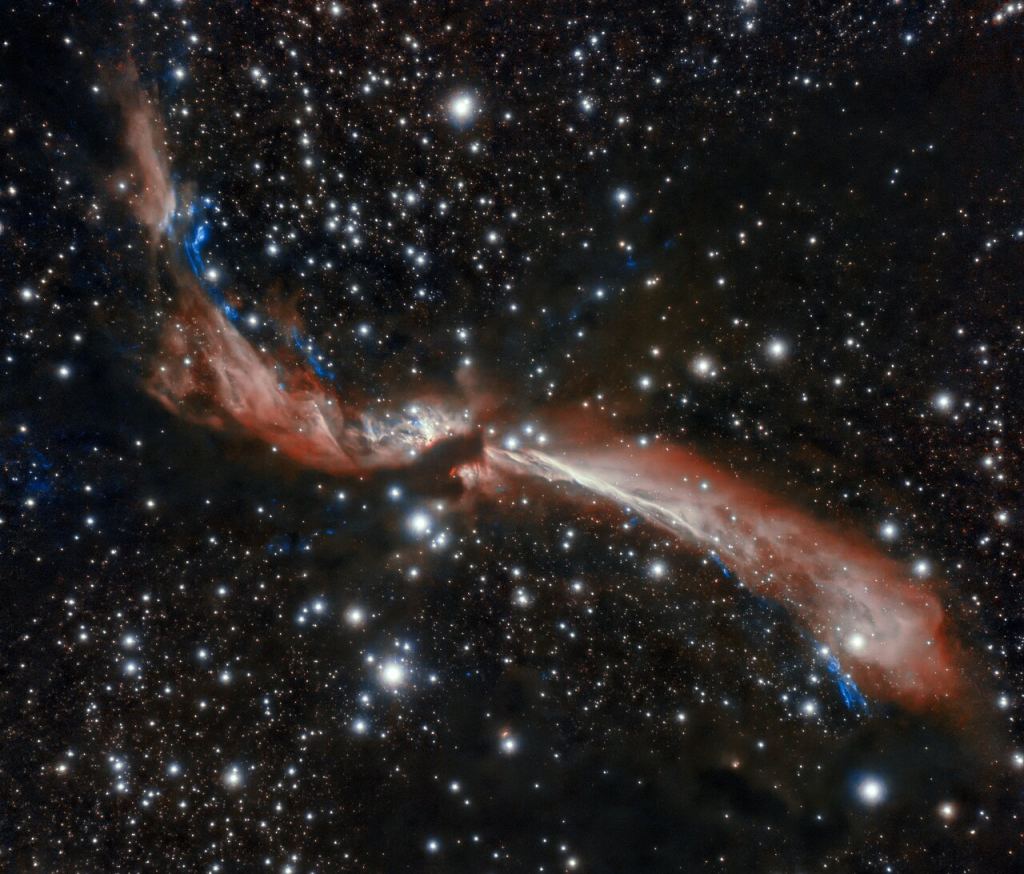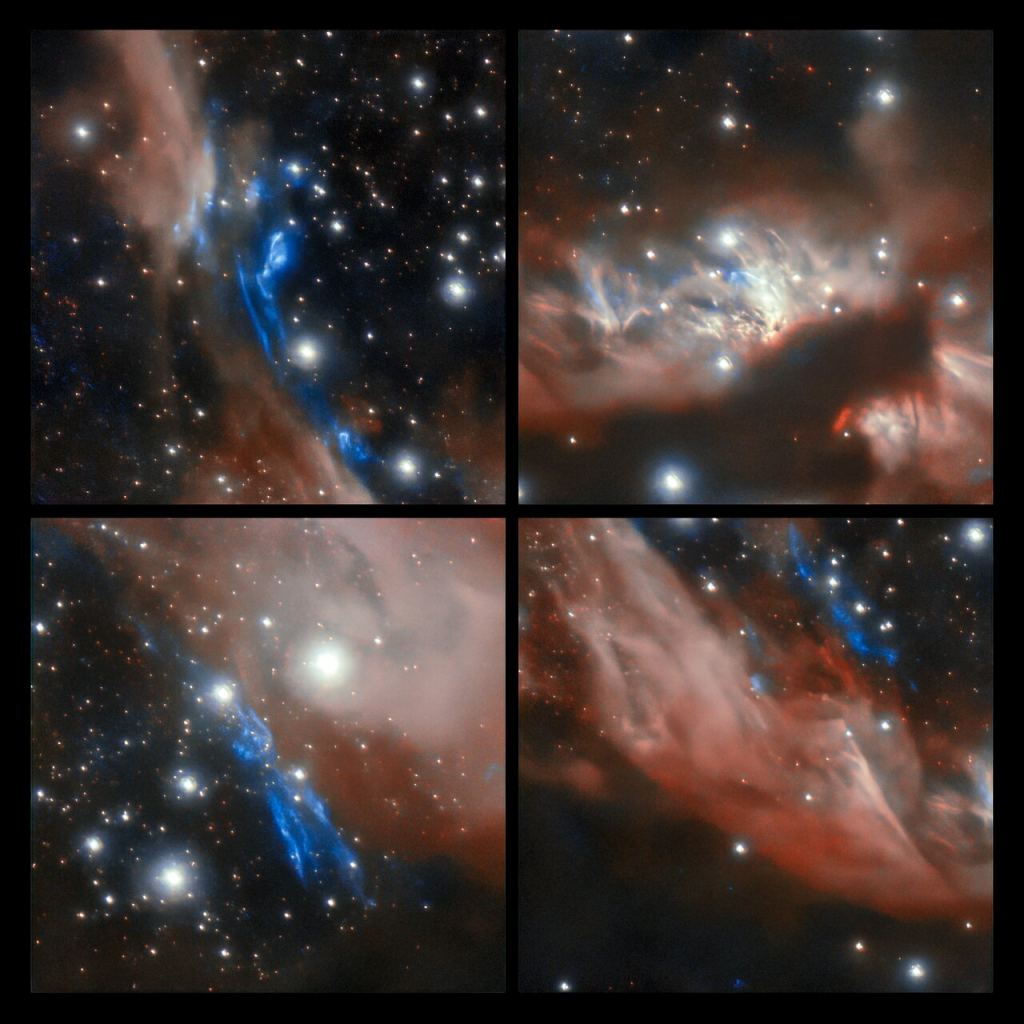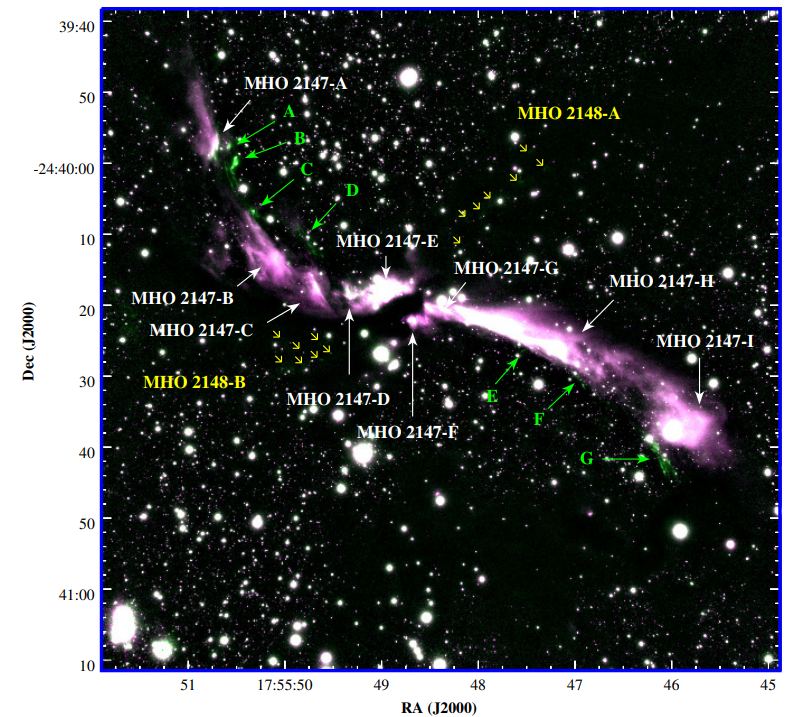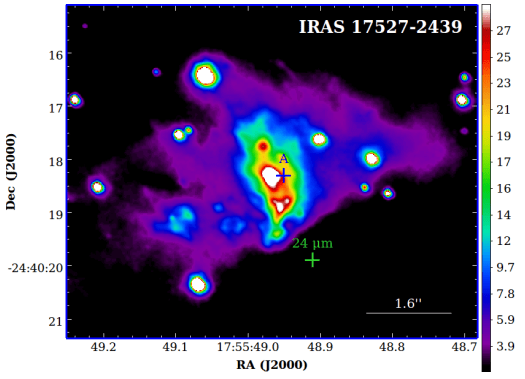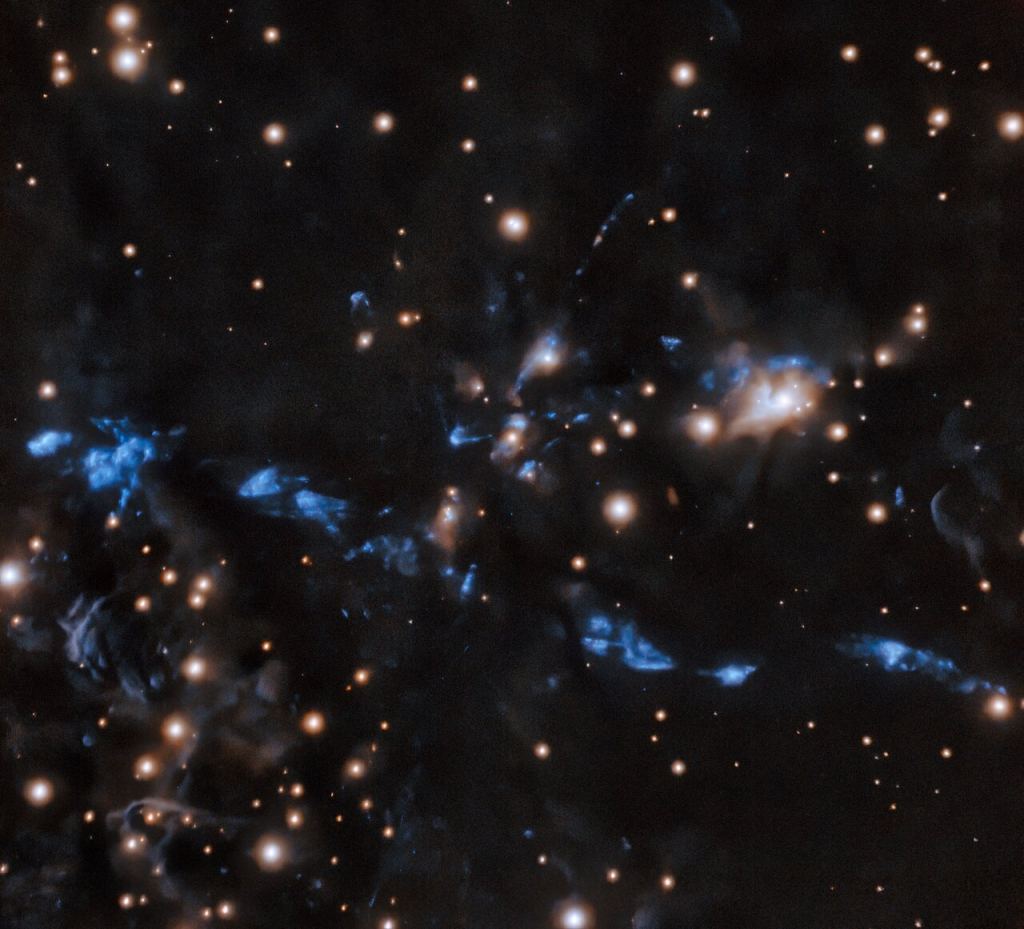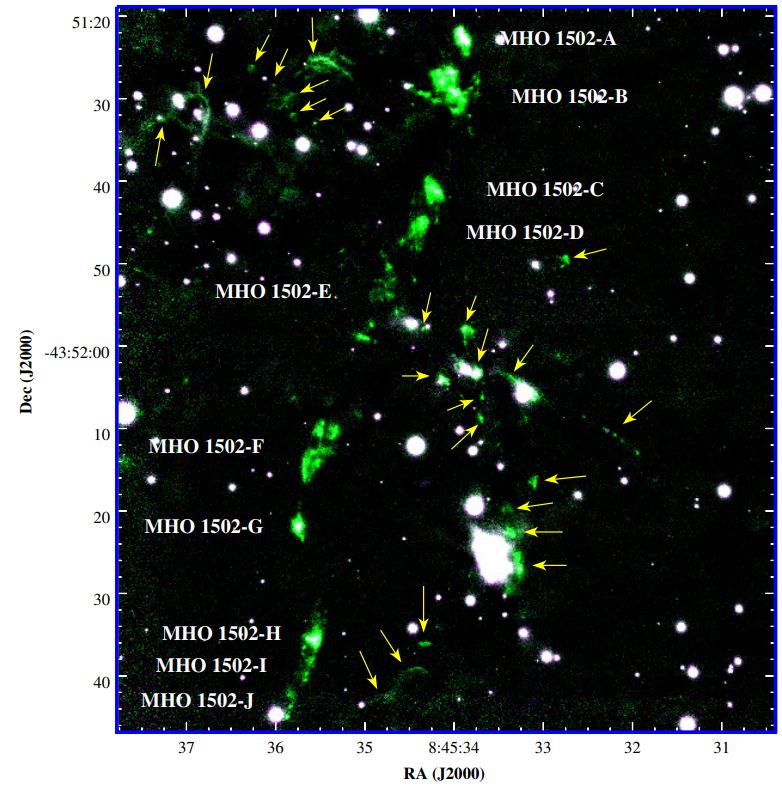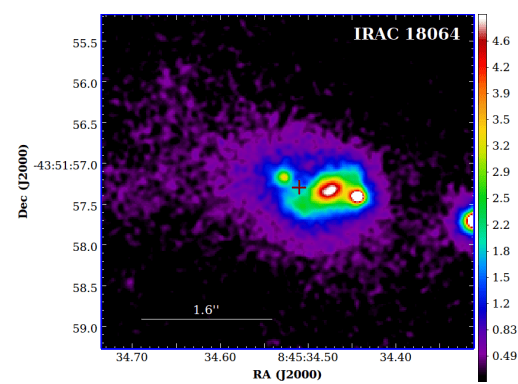Young stars go through a lot as they're being born. They sometimes emit jets of ionized gas called MHOs—Molecular Hydrogen emission-line Objects. New images of two of these MHOs, also called stellar jets, show how complex they can be and what a hard time astronomers have as they try to understand them.
Stellar jets from young stars aren't that rare. Young stars create them when they propel bursts of material out of their opposite sides. They only form when young stars are still growing and accreting material. Astronomers think interactions between the star's magnetic fields and the material surrounding the star's disks create the jets. Sometimes the jets are made up of knots of material, and sometimes they're continuous and curved.
A new paper looks at two of these MHOs and their environments. The authors used archived data and new observations to develop a model that explains them. They made headway but no firm conclusions. But their work does show how complex MHOs can be. And how pleasing they can be to the eye.
The paper is " High-resolution images of two wiggling stellar jets, MHO 1502 and MHO 2147, obtained with GSAOI+GeMS. " The journal Astronomy and Astrophysics will publish the paper, and it's currently available at the pre-press site arxiv.org. The lead author is L.V. Ferrero from the Universidad Nacional de Córdoba in Argentina.
The two systems of jets in this study show different morphologies. One of them is a pair of curved, serpentine jets. The other is a pair of jets made of knotted clumps of gas chained together—each of the pairs formed in a different type of stellar environment.
The curved jets are named MHO 2147, and they're about 10,000 light-years away in the Ophiuchus region. Astronomers think the stellar source responsible for the jets is IRAS 17527, discovered in 2011. Some interaction between the source and its environment creates the curved shape of the jets, but the stellar source isn't visible. The jets are curved because they point in different directions over time, and their sinewy form suggests continuous emission without interruption. In their paper, the astronomers point out that the jets' change in direction is due to gravitational influences from nearby stars.
Astronomers discovered IRAS 17537 in 2011 and identified it as a young stellar object (YSO) with about 12 solar masses. There was evidence at the time for a second companion star. This new study further examined IRAS 17527, and the authors think a triple star system could be responsible for the jet's curved morphology.
MHO 2147 is in an infrared dark cloud (IDC). An IDC is a cold, dense region inside a molecular cloud, and the IDC is opaque at the infrared wavelengths the astronomers observed in this study. Astronomers don't know much about IDCs yet, and they only discovered them in 1996. But evidence shows they could represent the earliest stages of star formation, especially massive stars.
A fainter jet named MHO 2148 is in the same region as MHO 2147, oriented perpendicularly. MHO 2148 doesn't share the same source as MHO 2147 but might come from a companion star.
The other jets, named MHO 1502, are in a different environment. They're knotted rather than curved, and the researchers think the jets are intermittent rather than continuous. MHO 1502 is in an active star-forming HII region made of ionized atomic hydrogen. The researchers think a pair of binary stars might create the jets.
MHO 1502 is about 700 parsecs away in the molecular cloud Vela-D. Astronomers discovered it in 2007, and they identified the knots in 2013. Previous research showed that MHO 1502's driving source could be a single intermediate-mass star but couldn't rule out an unresolved binary or even a multi-star system. This study hints at the presence of a binary star separated by about 240 AU but doesn't reach any specific conclusions.
The systems of jets and the sources that drive them are complex and interrelated, but some of the details are still unknown. Are binary or multiple stars at play in these systems? The authors think that's likely; otherwise, the jets wouldn't show clumping or curving.
Jets like these aren't uncommon, and understanding them might help astronomers understand the star-formation process and solar system evolution in more detail. Only young stars have jets because they only form when a star is actively growing. So learning more about MHOs would tell us more about young stars themselves and the star-formation process.
Astronomers only discovered these jets a few years ago, which is also true of Infrared Dark Clouds. The jets, the clouds, and the star-forming regions they reside in are probably connected in various ways, but the study of these objects is still in its infancy. Astronomers have a lot of work to do, and there'll no doubt be some exciting discoveries along the way.
The last word goes to the authors: "The similarity of MHO 2147, the Ad–jet, and the perpendicular MHO 2148 jet to other previously reported jets suggests the existence of a small but interesting group of adjacent and perpendicular jets that are interrelated and are likely to be associated. However, to shed light on the physical relation of MHO 2147, Ad–jet, and MHO 2148, high-angular-resolution and sensitive multi-wavelength data are needed."
 Universe Today
Universe Today

